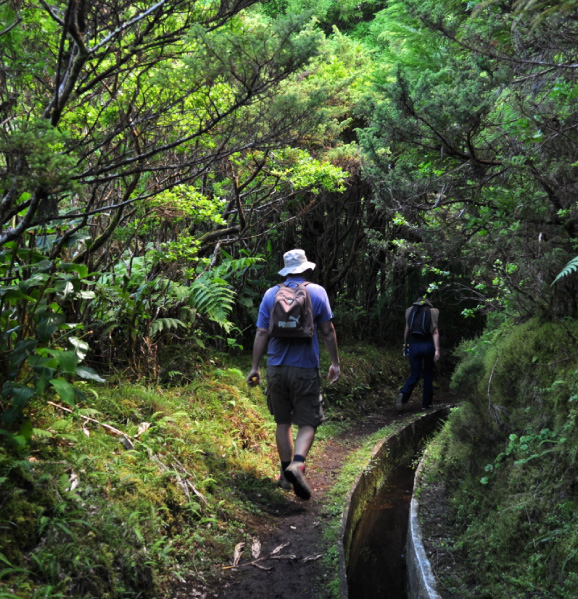Schio is the chief town of the Leogra Valley and has approximately 38.000 inhabitants. The Leogra Valley is a large furrow opening onto a plain-where Schio stands- then winding north west towards the Pian delle Fugazze Pass, at the foot of Mount Pasubio, between the spurs of Mount Summano, Mount Novegno and the small Dolomites.
The oldest document referring to it dates back to the year 983 during the Middle Ages, when the Bishop of Vicenza granted the monks of the Monastery of San Felice a court in Scledo (the name Schio derives from Ascledum which means a place where ischi-oaks-grow).
It is understood, therefore, that Schio owes its initial development to the Benedictines, who erected their monastery on the Gorzone Hill, where the Cathedral now stands.
The centre of the town developed around the Pedemontana and Tridentina Crossroads (Corobbo), Gorzone hill and the overlooking Castle Hill.
The population of Schio was so small that the seat of the local ecclesiastical authority remained in nearby Belvicino until 1122.
In the Middle Ages Schio was the fief of the Maltraversi Counts, and became a Commune owned and governed by Ezzelino da Romano, the Scaligeri family, the Visconti family and the nobleman Gorgio de’ Cavalli.
The Roggia Maestra, a branch of the Leogra torrent excavated towards the middle of the thirteenth century along the boundary between Schio and Pievebelvicino, played a fundamental role in the development of Schio. The canal has determined the town’s economic fabric and the structure of its urban centre, which it traverses with a system of 12 locks.
In 1406 Schio became part of the Veneto Republic and was ruled by a vicar, appointed annually by the Vicenza administration.
In an attempt to liberate itself from the dominion of the city of Vicenza, Schio sided with the pro-imperial forces during the Cambrai war and in 1514 the Serenissima (Republic of Venice) destroyed the town’s castle as punishment.
The 16th and 17th centuries saw the construction of new roads, public and religious buildings such as the Churches of S. Pietro and S. Maria in Valle, the Capuchin Monastery and the Baratto Hospital.
In the 18th century Vicenza granted Schio the right, which had been denied up until then, to manufacture wide cloth. This event, together with the foundation of the first wool mill based on new manufacturing methods and updated techniques by the Venetian nobleman Niccolò Tron, and the state incentives and benefits, favoured Schio’s economic take-off.
During this period the entrepreneurial class, having a strong tradition in textile crafts, was revitalised in terms people, means and attitude.
But Schio’s golden era was undoubtedly the nineteenth century, when Alessandro Rossi, transformed the original wool mill founded by his father in 1817 in Contrà Sareo, now via Pasubio, into the biggest textile complex in Italy. Schio became the capital of the wool industry, Italy’s Manchester, the civitas of Rossi’s ideological concept, and involving the entire territory in particular Pievebelvicino, Torrebelvicino, Santorso and Piovene Rocchette in his enterprise.
In the 19th century, the silk industry began to flourish alongside the wool industry, and evidence of its dimensions can still be seen in the former Bressan Silk Mill. The mechanical industry developed, the Saccardo Factory was set up and specialised in supplying shuttles and accessories to the textile sector, the mining industry took off with the mining of kaolin in the Tretto Kaolin Plant and the Marzari printing business was founded.
Schio’s economic and cultural dynamism continued into the first decade of the 20th century with the emergence of new industries, the construction of the Teatro Civico (Civic Theatre), of monuments to Alessandro Rossi and the Pasini brothers, of Art Nouveau buildings.
After the fear, the deprivation and the bombing suffered during the two world wars, the town made a slow economic recovery accompanied by urban expansion.
Today Schio lives in comparative affluence and is the major centre of attraction of the Alto Vicentino (Upper Vicenza province).
Just a short distance from Vicenza, a UNESCO World Heritage Site, which is rich in important historical and architectural features – the name Andrea Palladio says it all! – and close to the splendid walled towns of Bassano del Grappa and Marostica, as well as the Asiago tablelands, an area evocative of war memories and famous for its tourist facilities, Schio is the ideal place to visit.
Schio
image gallery

European Destinations of Excellence
Sustainable tourism destinations in Europe

NIN, CROATIA
The Most Romantic Destination in Europe

DURBUY, BELGIUM
A glorious mix of colours and experiences

SOCA VALLEY, SLOVENIA
A paradise for water sports on the river Soča

SILLY, BELGIUM
Full of remarkable trees, churches, chapels

Monte Isola, Italy
Extraordinary panorama and artistic beauty

JURMALA, LATVIA
A green seaside resort that is rich in unique natural resources

FAIAL, PORTUGAL
The Natural Park is filled with sweeping landscapes

ELBRO DELTA, SPAIN
The most extensive aquatic habitat of the Catalan lands

DRNIS, CROATIA
Well known for its original prosciutto and excellent wines

PARCO DEL MINCIO, ITALY
Extraordinary panorama and artistic beauty

TOURNUS, FRANCE
Extraordinary panorama and artistic beauty

MELLIEHA, MALTA
Dip in the blue waters of Mellieħa Bay or the surrounding bays

MULRANNY, IRELAND
Explore spectacular landscapes and seascapes

WILD TAIGA, FINLAND
You are most welcome to meet the locals!

KULDIGA, LATVIA
The most charming and magical towns in West Latvia

LANDLUST, AUSTRIA
Discover the special quality of country living away from tourist centres

































































